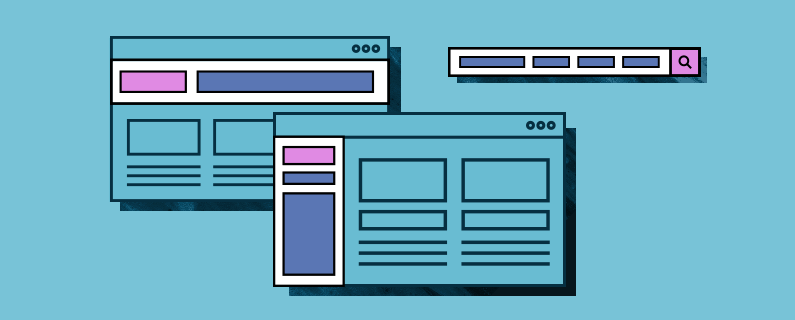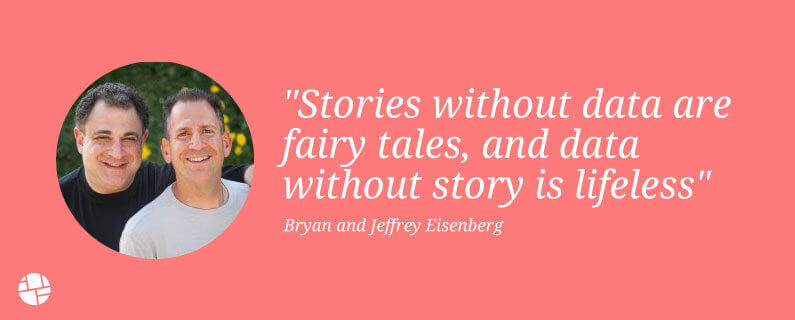Here’s Why Your Customers Are Tuning You Out
And how you can effectively re-engage them.
This content originally appeared in our XP² newsletter. Subscribe here to receive experience optimization insights like these, straight to your inbox
These days, it’s not uncommon to wake up every morning with anywhere from 15-25 unread marketing emails to your personal email account. Sprinkle in a couple of SMS alerts, a few branded push notifications, and another 10 promotional emails throughout the day, and voila – that’s the life of a modern consumer. But rather than receiving the interesting, thoughtful, or relevant messages you expected upon sign-up, marketing’s era of re-engagement has become a never-ending barrage of generic messages from brands hoping that something—anything—sticks.
To discover how we ended up in this messaging apocalypse—and whether we might come out on the other side—Ernie Santeralli, Content Marketing Manager at Dynamic Yield, spoke with Nadav Yair, the brand’s Senior Product Manager.
With 8+ years leading UI/UX and product lifecycle projects in eCommerce environments, he has a unique perspective on the past, present, and future of re-engagement.
In what follows, Nadav offers his thoughts on how marketers can incorporate emerging technologies into their strategies and achieve far more engagement—without burning out their audiences.
Q: Audience re-engagement isn’t a new idea. The old saying goes “your best new customers are your old customers,” after all. But how has this concept changed in the last five years? What recent advancements are transforming the game?
A: Some key changes and advancements include:
- Personalization and data analytics: Brands can now deliver personalized content experiences using AI-driven insights across many digital touchpoints.
- Omnichannel marketing: Businesses can now integrate data from different sources to create seamless, cohesive omnichannel marketing experiences.
- Automation (AI): Companies can use AI personalization to automate re-engagement campaigns and use machine learning-powered predictive analytics to ensure they’re increasingly efficient.
- Behavioral remarketing: Brands can now track user actions, accurately determine their consumer interests and affinities, and implement relevant remarketing.
- Social media and influencer marketing: Companies are now using influencers and their audiences to reach their target customers.
- Messaging platforms and chatbots: Generative AI-fueled chatbots can provide personalized assistance, support, and even recommendations in a conversational interface.
- Data management and trust: Companies must now prioritize trust-building and compliance with privacy regulations.
Five years ago, these factors either didn’t exist or weren’t as developed as they are today. These ideas have contributed to today’s consumer behavior, where most are ready to chase the latest trend rather than demonstrate brand loyalty, or switch from purchasing items outright to subscription models. Together all of these facets have led to businesses seeking more effective, personalized, and integrated re-engagement strategies.
Q: With all of these advancements working to a brand’s advantage, then what’s the biggest challenge they face today with re-engagement?
A: Most businesses struggle with capturing and maintaining audience attention in a saturated digital landscape marked by content fatigue, ad blockers, and privacy concerns. To overcome this, businesses must continuously test and adapt their engagement strategies to deliver content that matters to each customer, like tailored product recommendations or a limited-time offer on a recently viewed product – not just what matters to the business.
Q: If that’s the key, and businesses have access to such advanced tracking, triggering, and reporting mechanisms, then why is over-communication still such a persistent problem?
A: Today, users are more involved with brands than ever. We spend our days looking at an ever-growing list of messaging platforms on our phones, computers, and tablets, and when we’re not looking at screens, we’re dodging dynamic advertising on everything from billboards to benches. Users end up being bombarded with marketing messages from all directions.
Recent research from Litmus indicates that over-communication has a direct, negative impact on two of the top three monitored email KPIs among marketers: open and unsubscribe rates. In fact, overcommunication causes 50% of consumers to miss or ignore communications by phone, email, SMS, and social media, and one in four respondents switched brands or didn’t renew a subscription because they received too many emails or SMS messages.
Ultimately, this problem persists because many brands lack a channel prioritization strategy that tailors the right message to the right user on the right channel. Unfortunately, many brands in today’s landscape still prioritize quantity over quality. They’d rather send tens of daily messages to everyone and no one. But when communicating with users who might be overwhelmed with marketing messages, less is more.
Q: How important is personalization for effective re-engagement? Are businesses focusing on it enough?
A: Focusing on a message’s content rather than its scale can help the message become more efficient.
Today’s consumers expect content and messaging that’s tailored to them. They receive customized content and recommendations in places like their Amazon account homepage or Spotify Discover Weekly playlists and expect this personalized experience on all channels. To be effective, re-engagement campaigns must be personalized, or they won’t capture the recipient’s attention.
Fortunately, the personalization technology for email and messaging finally allows brands to accomplish the following in a structured, streamlined and scalable way:
- Set multi-channel prioritization strategies to determine which channels work best for specific use cases and audiences
- Send triggered messages in a single prioritized channel
- Limit the amount of communications with a user in a specific timeframe
- Set campaign priority status so important campaigns take precedence over lesser ones
Q: The modern marketer has access to countless communication channels – and if we’re not active on every social media platform, sending emails, triggering push notifications, and renting billboards, we feel like we’re missing out on potential results. How would you advise teams strategically to find the right balance?
A: Marketing teams must have the proper data and insights to make the right decisions. For example, when strategizing a single campaign, you need to decide:
“Which messaging use cases should we focus on?”
- Common use cases include abandoned cart, price drops, low stock on previously viewed products, or limited-time sales.
“Which channel should we utilize?”
- Available channels include personalized email, push notifications, SMS, in-app notifications, social media messaging, and website chatbots.
“Which recommendation strategy is the best fit for this message?”
- Strategies include most popular, trending now, new products, similar products, recently viewed, or affinity-based recommendations.
The best way to approach the above is to:
- Test
- Test
- TEST!!!
You need a technical solution that lets you not only test different content variations against one another but also different channels or combinations of channels within the same campaign to determine the best strategy for each use case and audience.
Q: What should teams keep in mind when developing a prioritization strategy and testing these content variations and channel combinations?
A: You should start by looking at which communication methods your audience segments prefer, and then ask if the channel is the most effective for delivering the messaging for a particular use-case.
For example, some common use cases naturally fit with specific characteristics of certain messaging channels.
- Cart abandonment → Email: Shopping cart abandonment emails are not urgent. Email’s rich content means you can show more product data (ratings, badges) and recommend similar products, which push notifications and SMS can’t do.
- Price-drop alert → Push notifications: Price drops are highly appealing and may not be relevant for long. Both SMS and Push are immediate channels where messages pop up on the user’s device, while email is slower. Push is also cheaper than SMS messages, making it the preferred channel for this use case.
- Flash-sale → SMS/Push: Users are less sensitive to over-messaging for highly appealing campaign offers. While these messages can ideally be sent across all available channels, SMS and Push are more immediate and urgent, making them more conducive to this use case.
To further optimize your strategy, consider the following questions as well:
- Are our messages consistent across new channels?
- Which additional channels can we integrate into our campaign?
- How costly or resource-intensive is each channel?
- How do we measure success?
For maximum efficiency, teams should always test performance to understand what’s working and be able to pinpoint and tweak the campaigns that are no longer performing.
The bottom line: As strategies differ between brands, the best approach is to test channels and strategies across audiences and use cases. This will help to determine the best channel prioritization strategy for each campaign.
Customers expect tailored re-engagement—so prepare to deliver
Cutting through the noise of generic marketing and re-engaging consumers has never been more challenging. But new technological advances—from personalization and data analytics to omni-channel marketing to automation—have empowered marketers to focus on the content of their messaging, rather than scale. Tapping into these new tools will lead to far better engagement from audiences who, now more than ever, need a reprieve from boring, irrelevant messaging.


 Personalization Unfolded
Personalization Unfolded


